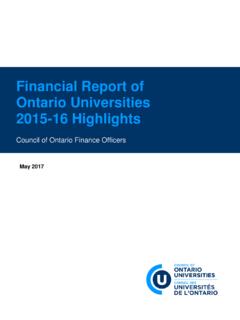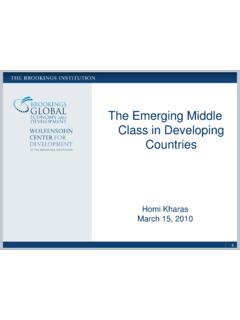Transcription of WHO published Volume 1 of the medicinal plants, …
1 WHO monographs on selected medicinal plants Volume 3. WHO. monographs on selected medicinal plants Volume 3. SMPvol3 i 12:09:48. WHO Library Cataloguing-in-Publication Data WHO monographs on selected medicinal plants. Vol. 3. 1. Plants, medicinal . 2. Angiosperms. 3. Medicine, Traditional. I. WHO Consultation on Selected medicinal Plants (3rd: 2001: Ottawa, Ont.) II. World Health Organization. ISBN 978 92 4 154702 4 (NLM classi cation: QV 766). World Health Organization 2007. All rights reserved. Publications of the World Health Organization can be obtained from WHO Press, World Health Organization, 20 Avenue Appia, 1211 Geneva 27, Switzerland (tel.: +41 22 791 3264;. fax: +41 22 791 4857; e-mail: Requests for permission to reproduce or translate WHO.)
2 Publications whether for sale or for noncommercial distribution should be addressed to WHO Press, at the above address (fax: +41 22 791 4806; e-mail: The designations employed and the presentation of the material in this publication do not imply the expression of any opinion whatsoever on the part of the World Health Organization concerning the legal status of any country, territory, city or area or of its authorities, or concerning the delimitation of its frontiers or boundaries. Dotted lines on maps represent approximate border lines for which there may not yet be full agreement. The mention of speci c companies or of certain manufacturers' products does not imply that they are endorsed or recommended by the World Health Organization in preference to others of a similar nature that are not mentioned.)
3 Errors and omissions excepted, the names of proprietary products are distinguished by initial capital letters. All reasonable precautions have been taken by the World Health Organization to verify the information contained in this publication. However, the published material is being distributed without warranty of any kind, either expressed or implied. The responsibility for the interpretation and use of the material lies with the reader. In no event shall the World Health Organization be liable for damages arising from its use. Printed in Spain SMPvol3 ii 12:09:49. Contents Acknowledgements v Introduction 1. General technical notices 5. Monographs (in alphabetical order of plant name). Fructus Ammi Majoris 9.
4 Fructus Ammi Visnagae 23. Fructus Anethi 33. Aetheroleum Anisi 42. Fructus Anisi 53. Semen Armenicae 64. Flos Arnicae 77. Folium Azadirachti 88. Oleum Azadirachti 102. Flos Carthami 114. Stigma Croci 126. Fructus Foeniculi 136. Radix Gentianae Luteae 150. Radix Gentianae Scabrae 160. Gummi Gugguli 169. Radix Harpagophyti 182. Rhizoma Hydrastis 194. Radix Ipecacuanhae 204. Aetheroleum Lavandulae 219. Flos Lavandulae 229. Strobilus Lupuli 236. Gummi Myrrha 247. Herba Passi orae 257. Testa Plantiginis 268. Radix Rehmanniae 283. iii SMPvol3 iii 12:09:50. Contents Fructus Schisandrae 296. Radix Scutellariae 314. Radix cum Herba Taraxaci 328. Semen Trigonellae Foenugraeci 338. Cortex Uncariae 349.
5 Fructus Zizyphi 359. Annex 1. Participants in the Third WHO Consultation on Selected medicinal Plants, The Governmental Conference Centre, Ottawa, Canada, 16 19 July, 2001 370. Annex 2. Cumulative index (in alphabetical order of plant name) 373. Annex 3. Cumulative index (in alphabetical order of plant material of interest) 375. iv SMPvol3 iv 12:09:50. Acknowledgements Special acknowledgement is due to Professors Norman R. Farnsworth, Harry Fong, and Gail B. Mahady of the WHO Collaborating Centre for Traditional Medicine, College of Pharmacy, University of Illinois at Chicago, Chicago, IL, USA, for drafting and revising the monographs. Similarly, special acknowledgement is due to Dr Raymond Boudet- Dalbin of the Laboratoire de Chimie Th rapeutique, University of Ren.
6 Descartes, Paris, France, for drawing the chemical structures. The photo- graph for the front cover was kindly provided by Professor Yoshiteru Ida of the School of Pharmaceutical Sciences, Showa University, Tokyo, Japan. WHO also acknowledges with thanks the valuable work of the approximately 170 experts in more than 65 countries who provided com- ments and advice on the draft texts; those who submitted comments through the World Self-Medication Industry (a nongovernmental organi- zation in of cial relations with WHO); and those who participated in the Third WHO Consultation on Selected medicinal Plants held in Ottawa, Canada, in July 2001 to review the monographs (see Annex 1). Sincere appreciation is extended to Health Canada, who hosted the above-mentioned WHO Consultation with its nancial support, and to the Regional Government of Lombardy, Italy, which provided funds for the editing and printing of this Volume .
7 Finally, WHO wishes to express thanks to Mr Raymond Tsai, Boston, USA, and Dr Hermann Garden, D sseldorf, Germany, for their indis- pensable assistance in nalizing and editing the manuscripts. v SMPvol3 v 12:09:50. SMPvol3 vi 12:09:50. Introduction Increasing role of the WHO monographs on selected medicinal plants Since 1999, WHO has published two volumes of the WHO monographs on selected medicinal plants. Volume 1 includes 28 monographs and Volume 2 contains an additional 30 monographs. Both of these volumes are now available on the WHO web site organization/ ). Despite the increasing use of herbal medicines, there is still a signi cant lack of research data in this eld, so that the WHO monographs are playing an increasingly important role.
8 For example, in the recent WHO global sur- vey on national policy and regulation of herbal medicines, of the 34 coun- tries reporting that they do not have their own national monographs and use other monographs, 13 use the WHO monographs as an authoritative refer- ence. Moreover, the format of the WHO monographs continues to be com- monly used for developing national monographs. In the same survey, of the 46 countries that have already developed national monographs on herbal medicines, several countries, such as Armenia, Bhutan, Brazil, Malaysia, and Myanmar, reported having used the WHO format as a basis. In May 2002, WHO launched its Traditional Medicine Strategy covering the period 2002 2005.
9 In 2003, the World Health Assembly adopted resolu- tion on traditional medicine, which requests WHO to seek, to- gether with WHO collaborating centres, evidence-based information on the quality, safety and cost-effectiveness of traditional therapies. The objective is to provide guidance to Member States on the de nition of products to be included in national directives and proposals on traditional-medicine policy implemented in national health systems. The continued development of the WHO monographs on selected medicinal plants is one of the important acti- vities being undertaken to meet the demands from Member States and in the implementation of the WHO Traditional Medicine Strategy. Preparation of monographs for Volume 3.
10 During the preparation of Volume 3, more than 170 experts were involved, in addition to members of WHO's Expert Advisory Panel on Traditional 1. SMPvol3 1 12:09:50. Introduction Medicine, a signi cant expansion in comparison to the numbers involved in the rst two volumes. National drug regulatory authorities in 65 coun- tries participated in the process, again a greater number than for the previ- ous volumes. This global network of active players facilitated wider ac- cess to the available scienti c references and information, in terms of both quality and quantity. This considerable level of support contributed greatly to the ef ciency of the preparation process. The Third WHO Consultation on Selected medicinal Plants was held in Ottawa, Canada, in July 2001 to review and nalize the draft monographs.















